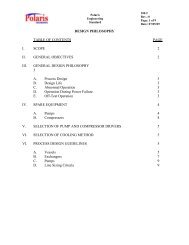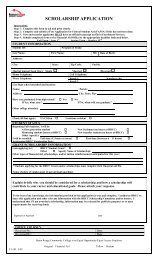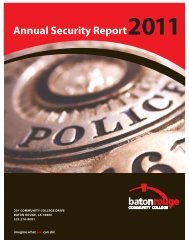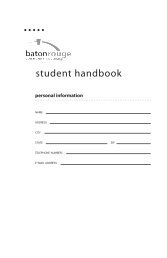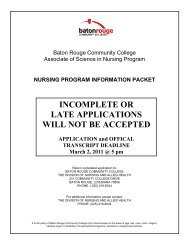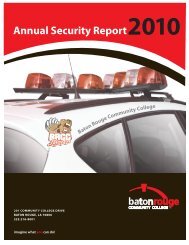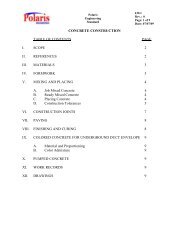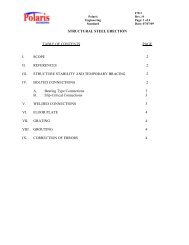Distance Education Models and Best Practices
Distance Education Models and Best Practices
Distance Education Models and Best Practices
Create successful ePaper yourself
Turn your PDF publications into a flip-book with our unique Google optimized e-Paper software.
ACADEMY ADMINISTRATION PRACTICEJUNE 2011Guidelines for Incorporating Computer Technologies Provide adequate structure <strong>and</strong> guidelines. The most successfulasynchronous projects include deadlines <strong>and</strong> a structure. Provide timely feedback to participants. Since the communications incomputer-based distance learning are more impersonal than video-baseddelivery, it is extremely important to provide quick <strong>and</strong> relevant feedback tostudents. Get to know the students. If possible, try to meet the students, either inperson or through video. In some cases, the students may be able to meetonce or twice; if not, videotapes can be sent to students to increase personalcommunications. Ensure sufficient technical support. It is very important to providesufficient technical support so that the students can get help when they needit. 21Video TechnologiesUse of video technology is an effective way to add visual content to a distanceeducation course, though some mediums can be rather expensive to implement.There are certain benefits to not only hearing but also seeing an instructor that havetraditionally been lost in distance education. These include behavior modeling,demonstration, <strong>and</strong> instruction of abstract concepts. Video technologies effectivelyincorporate these benefits into a distance education course <strong>and</strong> are particularly usefulfor visual learners. There are several different media that can be utilized to transmitvideo to students – videotapes, DVDs, satellites, television cables, computers <strong>and</strong>microwave.Videotape <strong>and</strong> DVDVideotapes <strong>and</strong> DVDs are perhaps the most accessible <strong>and</strong> common formats forvideo delivery. Their use is quite common in countries with high rates of advancedtechnology consumption – such as the United States, United Kingdom, <strong>and</strong> Australia.In addition to this ease of access, video tapes <strong>and</strong> DVDs are relatively inexpensive.Further, video for these formats can be easy to record <strong>and</strong> even amateurs provesuccessful producers of content. Video tapes <strong>and</strong> DVDs can be used to reproduce<strong>and</strong> distribute lectures, panel presentations, <strong>and</strong> demonstrations, among others.However, they are not (usually) 22 interactive <strong>and</strong> can be costly to ship to students viathe postal system.21 Ibid.22 DVDs do have some potential for interactive media through menu screens <strong>and</strong> selection options. However,these features require specialized expertise to develop.© 2011 Hanover Research ‐ Academy Administration Practice16



